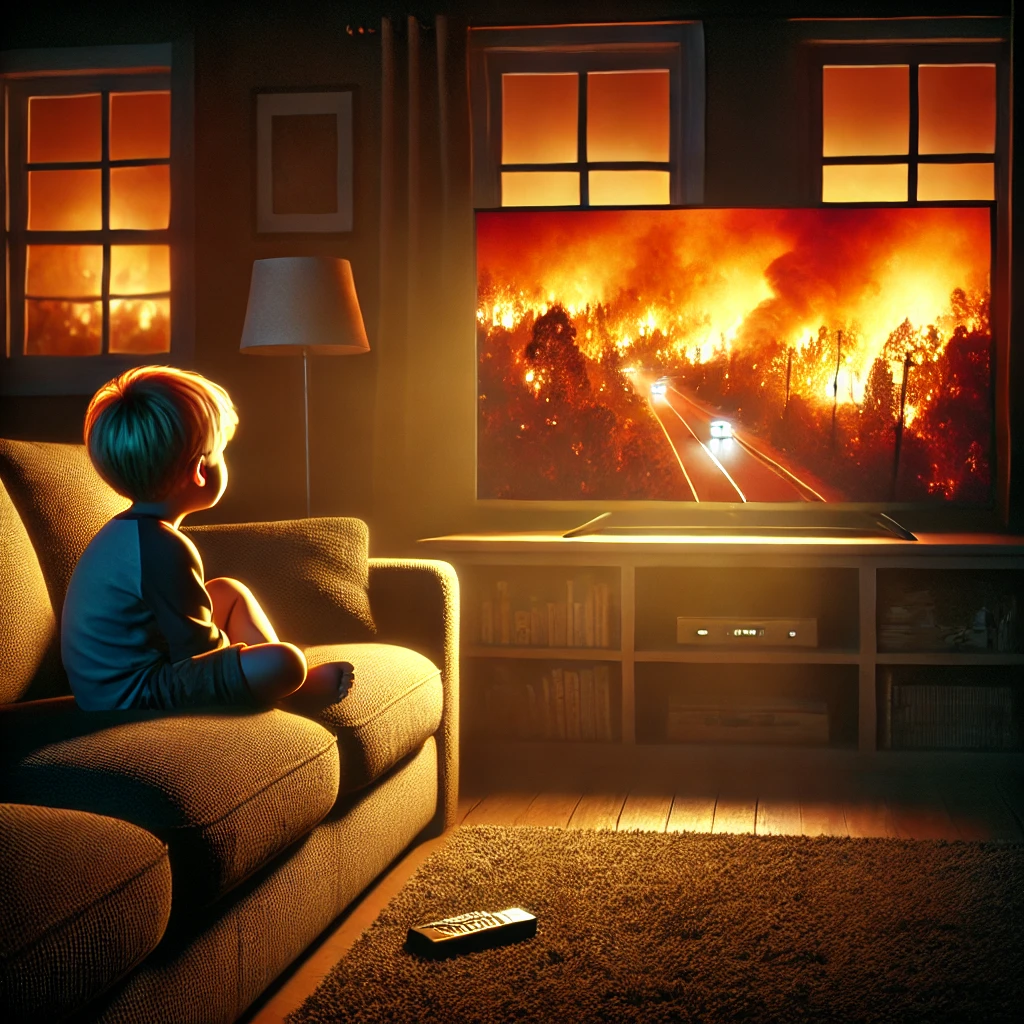In the age of instant media, children are exposed daily to disturbing footage of wildfires, earthquakes, floods, and other natural disasters—whether through TV broadcasts, online platforms, or social media. Although these events often occur far from them, their psychological impact can feel very close and deeply unsettling.
Children Struggle to Distinguish Between Reality and Screen
Young children, in particular, lack the cognitive maturity to distinguish between what is happening on a screen and what is part of their own world. Thus, seeing images of smoke, fire, or distressed people can trigger intense fear and anxiety, even if the child is in no actual danger.
Anxiety, Stress, and Sleep Disturbances
Psychological studies have shown that children who frequently watch disaster news are more likely to suffer from anxiety symptoms, chronic stress, nightmares, and even exhibit withdrawal or aggression as indirect emotional responses.
The Role of Parents in Guiding and Supporting
Parents must take an active role during such times. Turning off the TV is not enough; it’s essential to talk to the child, explain what’s happening in simple terms, and reassure them that they are safe. It is also advisable to limit news exposure and avoid watching distressing coverage in the presence of children.
Emotional Safety is a Priority
Creating a sense of security in children requires more than just physical protection—it involves shielding them from images that can plant fear in their hearts unnecessarily. A child’s mental well-being depends on a stable, reassuring environment and careful attention to the daily stimuli they encounter, whether real or virtual.






